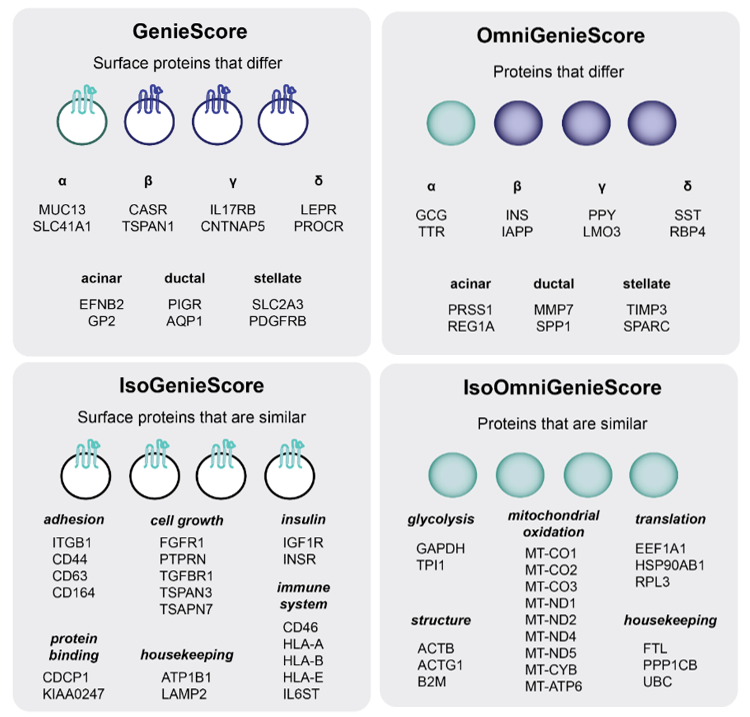Cell surfaceomes of pancreatic cell types
Cell surface proteins identified on mouse alpha and beta cell lines integrated with RNA-seq data reveal known and unknown cell-type markers.
The lack of suitable molecular reagents (other than insulin) that allow for the direct identification of β-cells (either for purification and functional characterization or to detect loss of mass during disease progression), as well as biomarkers that allow for the detection of active β-cell loss during the asymptomatic period of type 1 diabetes has limited the progress in our understanding of the mechanisms contributing to the development of autoimmune mediated destruction of β-cells during diabetes development. In collaboration with Dr. John Corbett at the Medical College of Wisconsin, we have begun to address this issue by determining the identity of proteins and glycan structures selectively expressed on the surface (surfaceome) of β-cell and non-β-cell populations of the islet (including, but not limited to, α-cells, δ-cells, islet endothelial cells, and passenger leukocytes).
Besides determining the identity of the proteins, we also carefully map the extracellular protein epitopes and determine glycan structures present. Using our innovative bioinformatic platforms for proteins and glycans, we can rapidly integrate proteomic, transcriptomic, and glycomic data. Importantly, by including both rodent and human islets, our results and reagents will broadly benefit research and translational applications.
SurfaceGenie analysis of single cell RNA-seq data from dissociated human islets (Lawlor, et al., Genome Res, 2017)
SurfaceGenie makes it possible to prioritize cell surface markers for specific cell types or experimental or disease conditions - starting with proteomic or transcriptomic data.
In our recent publication, we applied SurfaceGenie to the analysis of single cell RNA-seq data from dissociated human islets to prioritize cell surface markers for pancreatic cell types not previously described. Unlike previous approaches which rely on gene ontology or signal peptide predictions, SurfaceGenie incorporates multiple metrics to provide confidence that a protein is actually a cell surface protein and reveals those proteins that are most disparate in abundance among cell types.
Click the button below to download the Supplementary data file from the paper to see the SurfaceGenie analysis of the RNA-seq data from dissociated human islets.


